![]()
![]()
![]()
Use LEFT and RIGHT arrow keys to navigate between flashcards;
Use UP and DOWN arrow keys to flip the card;
H to show hint;
A reads text to speech;
69 Cards in this Set
- Front
- Back
|
the forward force produced by the powerplant/ propeller or rotor. |
Thrust |
|
|
It opposes or overcomes the force of drag. |
Thrust |
|
|
As a general rule, thrust acts 1._____ to the 2._______ . |
1. parallel 2. longitudinal axis |
|
|
Thrust is the 1._____ force produced by the 2._______. It opposes or overcomes the force of 3.______. |
1. forward 2. powerplant/ propeller or rotor 3. drag |
|
|
a rearward, retarding force caused by disruption of airflow by the wing, rotor, fuselage, and other protruding objects. |
Drag |
|
|
As a general rule, drag opposes 1._____ and acts 2._______ to the 3.______. |
1. thrust 2. rearward parallel 3. relative wind |
|
|
Drag is a 1._____, retarding force caused by 2.______ of airflow by the wing, rotor, fuselage, and other protruding objects. |
1. Rearward 2. disruption |
|
|
is a force that is produced by the dynamic effect of the air acting on the airfoil |
Lift |
|
|
acts perpendicular to the flight path through the center of lift (CL) and perpendicular to the lateral axis. |
Lift |
|
|
In level flight, lift opposes the ________. |
downward force of weight |
|
|
Lift is a force that is produced by the 1._______ acting on the airfoil, and acts 2._______ to the flight path through the center of 3._____ and perpendicular to the 4._____. |
1. dynamic effect of the air 2. perpendicular 3. lift 4. lateral axis |
|
|
the combined load of the aircraft itself, the crew, the fuel, and the cargo or baggage. |
Weight |
|
|
is a force that pulls the aircraft downward because of the force of gravity. |
Weight |
|
|
Weight is the combined load of the 1.______. |
aircraft itself, the crew, the fuel, and the cargo or baggage |
|
|
Weight is a force that pulls the aircraft 1._______ because of the force of gravity. It opposes 2._____ and acts 3._______ through the aircraft’s center of gravity (CG). |
1.downward 2. lift 3. vertically downward |
|
|
The axis passes through the CG and parallel to a line from nose to tail |
Longitudinal axis |
|
|
The motion about the aircraft’s longitudinal axis is |
Roll |
|
|
Longitudinal axis passes through the CG and parallel to a line from _______ |
nose to tail |
|
|
The axis that passes through the CG at right angles to the other two axis |
Vertical axis |
|
|
The motion about its vertical axis is |
Yaw |
|
|
Vertical axis passes through the 1._____ at 2.______ to the othertwo axis |
1. CG 2. right angles |
|
|
The axis that passes parallel to a line from wing tip to wingtip
|
Lateral axis |
|
|
The motion about its lateral axis is the |
Pitch |
|
|
Lateral axis passes parallel to a line from ________ |
wing tip to wing tip |
|
|
Whenever an aircraft changes its flight attitude or position in flight, it rotates about _________. |
one or more of the three axis |
|
|
The axis of an aircraft are three imaginary lines that pass through an aircraft’s 1.______ . The three axis pass through the CG at 2.____ angles to each other. |
1. CG 2. 90° |
|
|
The three motions of the conventional airplane |
roll pitch yaw |
|
|
Roll is controlled by the _____ |
ailerons |
|
|
Pitch is controlled by the ______ |
elevators |
|
|
Yaw is controlled by the ______ |
rudder |
|
|
is the inherent quality of an aircraft to correct for conditions that may disturb its equilibrium and to return to or to continue on the original flight path. |
Stability |
|
|
Stability is the inherent quality of an aircraft to correct for conditions that may disturb its 1. ______ and to return to or to continue on the 2._____. |
1. equilibrium 2. original flight path |
|
|
What is stability? |
Stability is the inherent quality of an aircraft to correct for conditions that may disturb its equilibrium and to return to or to continue on the original flight path. |
|
|
The two types of stability are: |
static and dynamic |
|
|
It refers to the initial tendency, or direction of movement, back to equilibrium. |
Static stability |
|
|
In aviation, it refers to the aircraft’s initial response when disturbed from a given pitch, yaw, or bank |
Static stability |
|
|
What is static stability |
It refers to the initial tendency, or direction of movement, back to equilibrium. |
|
|
Static stability refers to the 1.______, or direction of movement, back to equilibrium. In aviation, it refers to the aircraft’s 2.______ when disturbed from a given pitch, yaw, or bank |
1. initial tendency 2. initial response |
|
|
the initial tendency of the aircraft to return to the original state of equilibrium after being disturbed. |
Positive static stability |
|
|
What is Positive static stability |
the initial tendency of the aircraft to return to the original state of equilibrium after being disturbed. |
|
|
Positive static stability is the 1.______ of the aircraft to return to the 2.______of equilibrium after being 3.______. |
1. initial tendency 2. original state 3. disturbed |
|
|
the initial tendency of the aircraft to remain in a new condition after its equilibrium has been disturbed. |
Neutral static stability |
|
|
Neutral static stability is the initial tendency of the aircraft to remain in a _______ after its equilibrium has been disturbed. |
new condition |
|
|
An aircraft that has ________ tends to stay in its new attitude when it's disturbed. |
neutral static stability |
|
|
the initial tendency of the aircraft to continue away from the original state of equilibrium after being disturbed. |
Negative static stability |
|
|
Negative static stability is the initial tendency of the aircraft to ________ from the original state of equilibrium after being disturbed. |
continue away |
|
|
an aircraft that has ________ tends to continue moving away from its original attitude when it's disturbed. |
negative static stability |
|
|
Example of positive static stability |
you hit some turbulence, and the nose pitches up. Immediately after that happens, the nose lowers and returns to its original attitude. |
|
|
Example of neutral static stability |
if you hit turbulence and your nose pitches up 5 degrees, and then immediately after that it stays at 5 degrees nose up, |
|
|
Example of negative static stability |
if you hit turbulence and your nose pitches up, and then immediately continues pitching up |
|
|
It refers to the aircraft response over time when disturbed from a given pitch, yaw, or bank. |
Dynamic stability |
|
|
Dynamic stability refers to the aircraft ________ when disturbed from a given pitch, yaw, or bank. |
response over time |
|
|
What is dynamic stability |
It refers to the aircraft response over time when disturbed from a given pitch, yaw, or bank. |
|
|
Dynamic stability also has three subtypes |
Positive dynamic stability Neutral dynamic stability Negative dynamic stability |
|
|
over time, the motion of the displaced object decreases in amplitude and, because it is positive, the object displaced returns toward the equilibrium state.
|
Positive dynamic stability |
|
|
Positive dynamic stability—over time, the motion of the displaced object 1.______ and, because it is positive, the object displaced returns 2._____ the equilibrium state. |
1. decreases in amplitude 2. toward |
|
|
once displaced, the displaced object neither decreases nor increases in amplitude.
|
Neutral dynamic stability |
|
|
Neutral dynamic stability—once displaced, the displaced object 1.______. A 2.________ exhibits this tendency. |
1.neither decreases nor increases in amplitude 2. worn automobile shock absorber |
|
|
What is positive dynamic stability |
over time, the motion of the displaced object decreases in amplitude |
|
|
What is neutral dynamic stability |
once displaced, the displaced object neither decreases nor increases in amplitude. |
|
|
over time, the motion of the displaced object increases and becomes more divergent |
Negative dynamic stability |
|
|
Negative dynamic stability—over time, the motion of the displaced object _______ |
increases and becomes more divergent |
|
|
What is negative dynamic stability |
over time, the motion of the displaced object increases and becomes more divergent |
|

|
Positive static stability |
|
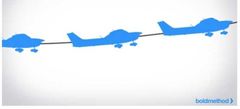
|
Neutral static stability |
|
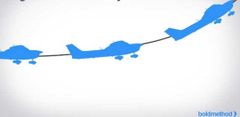
|
Negatice static stability |
|
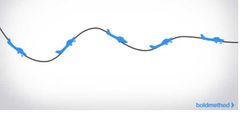
|
Positive dynamic stability |
|
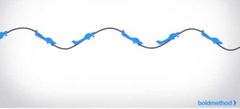
|
Neutral static stability |
|
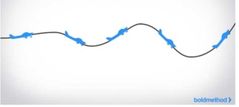
|
Negative dynamic stability |

